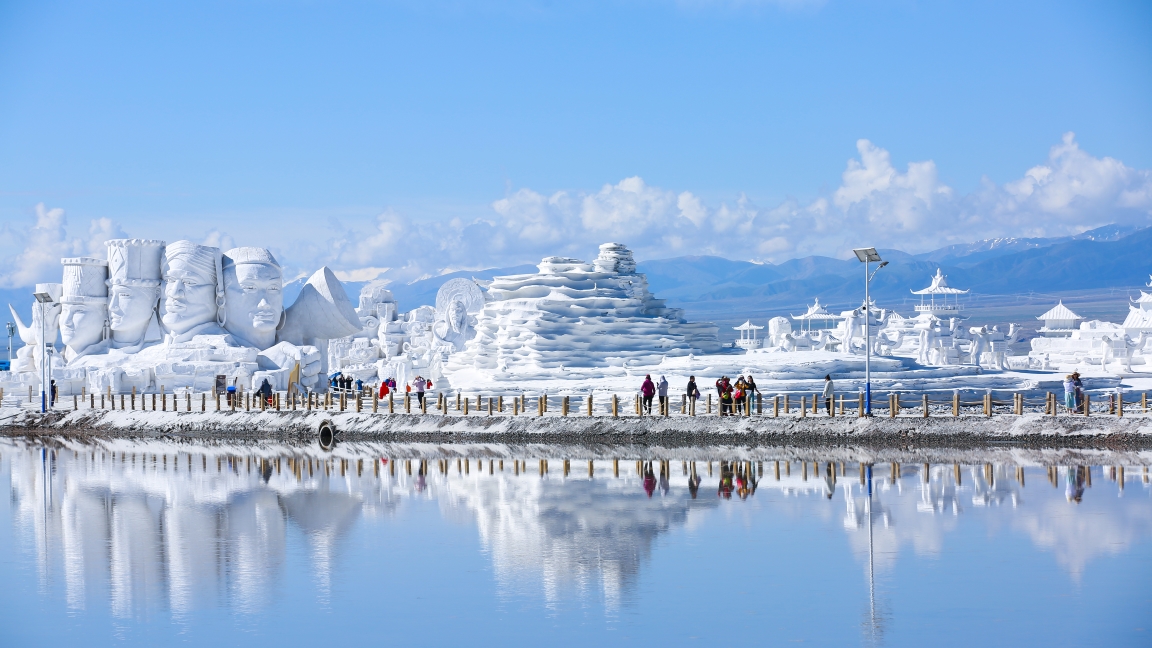
Growth Goes Green
China's economic miracle was once viewed as a calamity for the environment, but the nation has achieved what was once thought impossible: achieving growth while protecting the natural world. This series explores how the world's second-largest economy is reducing its carbon footprint even as its economy powers ahead.
Shot by Zhu Qing. Edited by Yang Meiping. Reported by Zhu Qing. Subtitles by Yang Meiping, Emma Leaning.
In 2013, a woman in a bright red dress walked in the shallow waters of Chaka Salt Lake in the westernmost province of Qinghai, her reflection mirrored against a blue sky and snowcapped peaks. That image, captured in a photograph, went viral online, turning a little-known industrial salt town into a tourist destination.
Today, the lake still produces premium brand Da Qing salt, but it also draws visitors from across China and abroad, eager to see what locals call the "Sky Mirror."
Qinghai Salt Industry Co, part of the Western Mining Group, is a leading salt producer in China, operating Chaka and Keke Salt Lakes with a combined reserve of approximately 1.4 billion tons of sodium chloride. At its Chaka production plant, salt crystals glide along conveyor belts in a man-made river, heading for automated packing machines.
"In the 1980s, we needed more than 1,000 workers here," said company chairman Liu Chaokun, "but now 450 people can do the job. Their work generated 540 million yuan (US$75 million) in revenue last year."

In the workshop of Qinghai Salt Industry Co, rows of machines are operating.
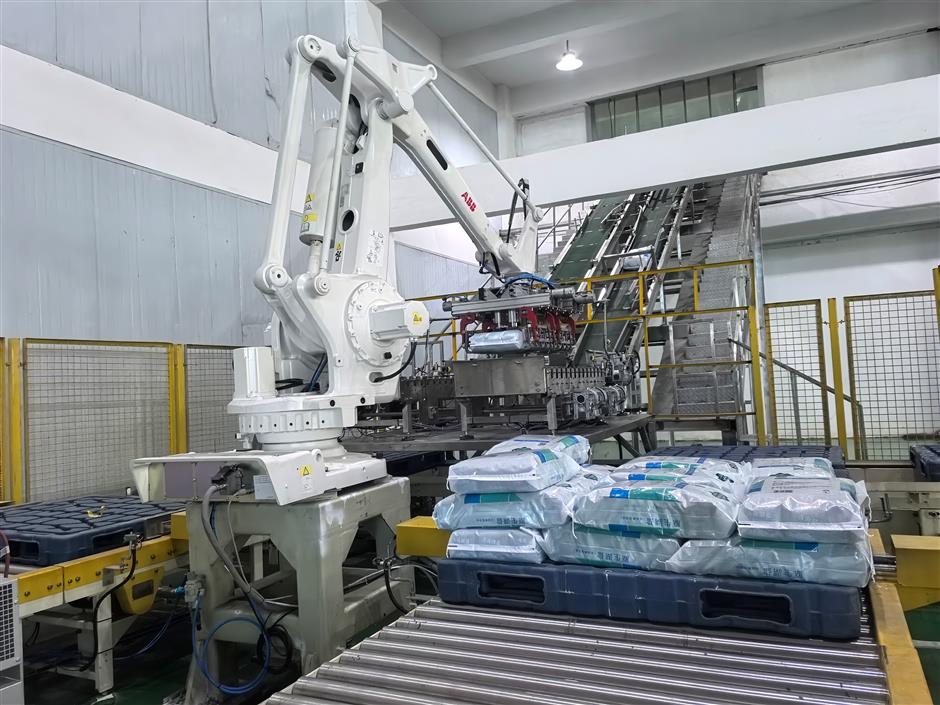
A robotic arm packs products in the workshop of Qinghai Salt Industry Co.
The shift comes from decades of operations upgrading.
In the 1950s, workers shoveled salt under the relentless sun of the Qinghai plateau, hauling it by animal-drawn or hand-pushed carts to the factory. Today, twin-wheel dredging boats harvest the salt directly from the lake, and barges unload it automatically to the shore. No more shovels.
Processing is equally high-tech, with crushing, washing, drying, grading and packing all automated. Robots sort finished products for shipment nationwide.
"Our mechanization rate is over 95 percent," Liu said. "No direct hand contact from the lake to the bag. That means higher efficiency, lower labor cost, and guaranteed purity."
Chaka Salt Lake, which sits at an elevation of 3,000 meters at the eastern end of the Qaidam Basin and covers 105 square kilometers, is the remnant of a tectonic movement that elevated land from the ocean, leaving some seawater in the lower basins. The lake is flanked by 100 kilometers free of industrial pollution.
Visitors can tour the production line and make small salt sculptures from salt and starch, baked on-site.
"Families with children love it," Liu said.
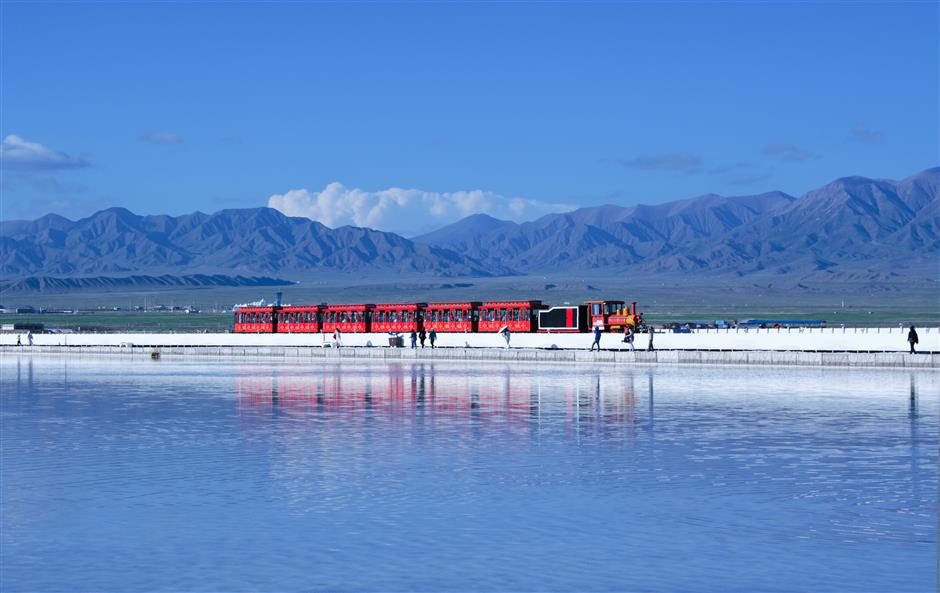
A red tourist train travels across Chaka Salt Lake, reflecting the landscape of the Qilian Mountains and sky in the mirror-like water.
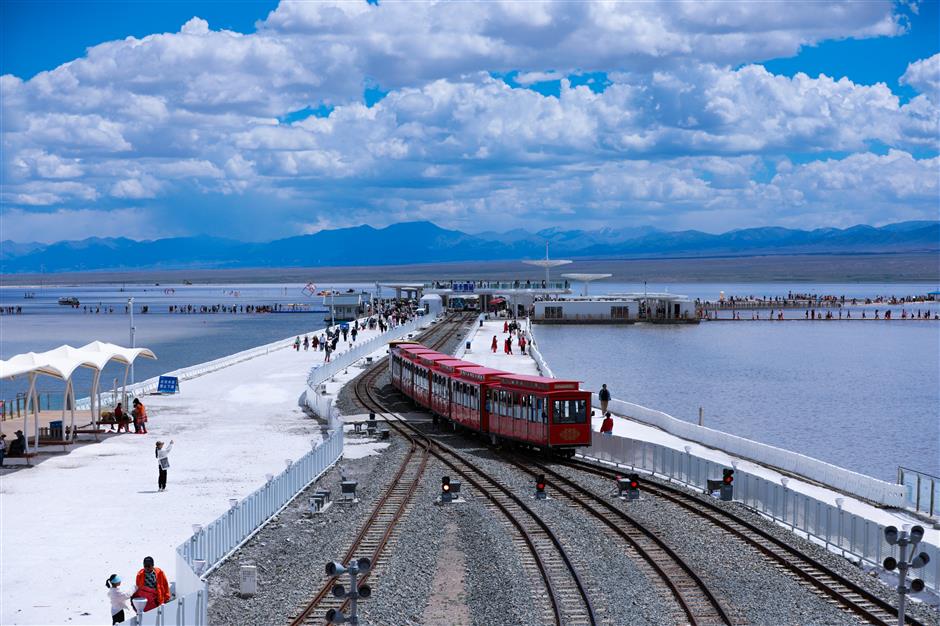
A small train carries visitors along the lake at Chaka Salt Lake.
Salt production remains the area's economic backbone, but tourism has provided the remote region with a new lease of life.
"After the red dress photo went viral, we started exploring the 'industry + tourism' model," said Niu Jiying, assistant general manager of the Qinghai Caka Salt Lake Culture Tourism Development Co.
The idea was to repurpose industrial facilities into tourist attractions with minimal environmental impact.
"For example," Niu went on to explain, "there's a little train that once transported salt that now carries sightseers along the lake."
The area boasts six themed zones; the most popular allows visitors to walk in the shallows to experience the lake's reflective surface.
"When the weather is clear, it creates the perfect shot," Niu added.
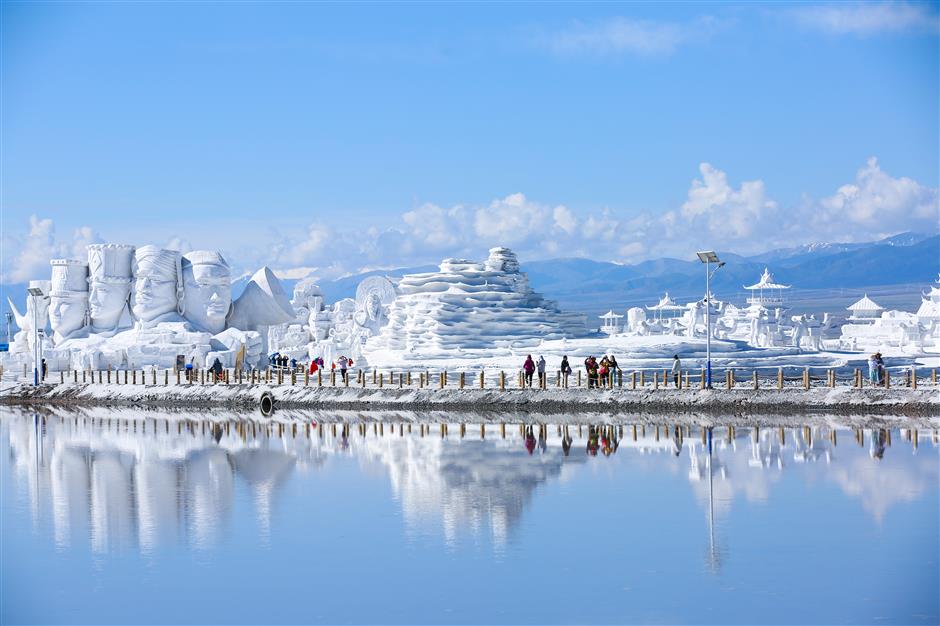
Outdoor salt sculptures at Chaka Salt Lake

Salt sculpture products are for sale in a souvenir shop at Chaka Salt Lake.
Equally striking, further along the lake, is the "snow scene," an outdoor salt sculpture art zone. Small, handcrafted versions of the sculptures, commissioned from local residents, are favorite tourist souvenirs, providing jobs for 5,000 people.
Tourism has completely transformed the town. Ten decades ago, Chaka had little to offer visitors. Today, locals operate 20,000 guest beds. Local per-capita disposable income in 2023 nearly doubled from a decade earlier to 22,300 yuan.
"My guesthouse is built to the same standards as big-city accommodation," villager Cao Yanhua told Qinghai Daily. "It brings in 600,000 yuan in revenue every year."
In the first half of 2025, the Sky Mirror scenic area welcomed 763,000 visitors. The tourism industry has generated over 500 million yuan for the local economy since 2016.

A visitor wears eco-friendly shoe covers while taking photos at Chaka Salt Lake.

Visitors wear eco-friendly shoe covers as they walk across Chaka Salt Lake, one of the most popular activities here.
As the salt lake has grown in fame, so has the challenge to keep it pristine.
According to Niu, tourism and salt production zones are managed separately.
On the tourism side, visitors are required to wear eco-friendly shoe covers before stepping into the lake to prevent damage to the salt crust. There's also a "bottle-for-salt" program, giving visitors a packet of the premium salt for every five discarded plastic bottles they collect.
"It's not just an environmental measure; it's also an educational approach to get visitors involved in protecting the lake," Niu explains.
On the industrial side, the salt company adheres to rigorous sustainable practices.
"Our extraction operates under strict limitations," Liu explained. "We can only extract from the top four meters of the lake, leaving the 'salt roots' intact to naturally regenerate."
He said Chaka Salt Lake has a reserve of 450 million tons, enough to supply salt to China for 40 years, and the salt is a renewable resource.
"The brine concentration here is very high. As long as we don't over-extract, the lake will naturally crystallize more salt," he explained.
Additionally, no polluting industries are allowed within a 100-kilometer radius of the lake, ensuring that the air and water remain unspoiled.
The town of Chaka has been officially recognized as one of "China's most beautiful, livable towns," and has been listed among the top photography sites in China.

